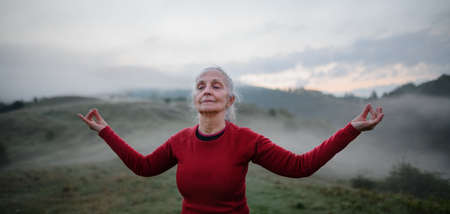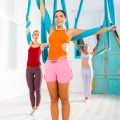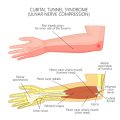1. Introduction to Balance Challenges in the Elderly
In the United Kingdom, balance issues among older adults present a significant public health concern, with far-reaching implications for individuals and communities alike. According to recent data from Age UK and the NHS, approximately one in three people aged 65 and over will experience a fall at least once a year, rising to one in two among those aged 80 and above. These incidents are not merely isolated accidents; they often result in serious injuries such as hip fractures, head trauma, or long-term loss of independence. Beyond the physical consequences, falls can also lead to psychological effects like anxiety, fear of falling again, and social isolation.
The impact extends beyond personal health, placing pressure on families, carers, and the already stretched NHS resources. In British communities, preventing falls has become a priority due to its potential to reduce hospital admissions and improve quality of life for older residents. There is growing recognition that targeted intervention—grounded in evidence-based practice—is essential for mitigating these risks. By understanding the prevalence and consequences of balance challenges in later life, we can better appreciate the importance of early identification and proactive management within the unique context of British healthcare and community support systems.
2. Current Evidence on Balance Assessment
Assessing balance in older adults is a critical step towards implementing effective fall prevention strategies within the UK’s health system. The National Health Service (NHS) and local authority services have adopted a range of validated assessment tools, each with varying degrees of sensitivity, specificity, and practical utility in clinical settings. Below is a concise review of the most widely used and evidence-based approaches for evaluating balance among elderly populations in Britain.
Validated Tools Commonly Used in the UK
| Assessment Tool | Description | Strengths | Limitations |
|---|---|---|---|
| Berg Balance Scale (BBS) | 14-item scale assessing static and dynamic balance activities commonly performed in daily life. | Widely validated, easy to administer, clear scoring system. | May not detect subtle changes; ceiling effect in high-functioning individuals. |
| Tinetti Performance-Oriented Mobility Assessment (POMA) | Measures both gait and balance through observation of functional tasks. | Covers multiple domains; good predictive validity for falls. | Takes time to administer; some subjectivity in scoring. |
| Timed Up and Go (TUG) Test | Assesses mobility, balance, walking ability, and fall risk by timing how long it takes to stand up, walk 3 metres, return, and sit down. | Quick; minimal equipment; practical for community settings. | Less informative about specific balance impairments. |
| Four Stage Balance Test | Evaluates static balance by asking the individual to stand in four increasingly challenging positions. | No equipment needed; very quick to perform. | Does not assess dynamic or functional balance tasks. |
| Short Physical Performance Battery (SPPB) | Combines standing balance, walking speed, and chair stands to assess lower extremity function. | Predictive of disability and institutionalisation; comprehensive overview of physical performance. | Slightly longer to administer; requires space for walking test. |
NHS Guidance and Local Practice Patterns
The NHS recommends using a combination of these tools depending on patient presentation and care setting. For example, the TUG test is frequently used in GP surgeries due to its simplicity, while multidisciplinary teams in falls clinics may employ the BBS or SPPB for more detailed assessments. Importantly, local health services often adapt these tools for use during home visits or community screenings, ensuring that frail or housebound older adults are not overlooked. Clinical guidelines also stress the importance of integrating subjective history—such as previous falls or dizziness—with objective measures to form a holistic understanding of each individual’s fall risk profile.

3. Physical Activity and Exercise Interventions
Within the UK, evidence-based exercise interventions have been repeatedly demonstrated to be effective in improving balance among older adults, thereby reducing the risk of falls and promoting independence. Among these interventions, Tai Chi has gained increasing recognition due to its gentle, low-impact movements that focus on weight transfer, postural alignment, and mindful motion. Several NHS-backed studies highlight Tai Chi as particularly beneficial for improving proprioception and balance confidence in community-dwelling elderly Britons.
Strength training is another cornerstone practice supported by robust evidence. Programmes incorporating resistance bands, light free weights, or even bodyweight exercises can significantly improve lower limb strength—a key factor in balance maintenance. The Royal Osteoporosis Society and Age UK both recommend supervised strength training sessions, ideally tailored by physiotherapists or trained instructors to individual abilities and health status.
Group exercise classes—such as “Stay Active” sessions commonly offered at local leisure centres or via council-supported initiatives—also play a vital role in encouraging regular physical activity among older adults. These classes often combine elements of balance work, flexibility, coordination, and social engagement. The group setting is especially pertinent in the British context, fostering motivation and adherence through community spirit while also helping to address issues of isolation frequently faced by elderly individuals.
Accessibility remains an important practical consideration; rural areas and socioeconomically deprived regions may face barriers to service availability. To address this, local authorities and charities across the UK are increasingly offering subsidised transport schemes or online exercise sessions—a trend accelerated during recent public health restrictions. Importantly, GPs and allied health professionals are encouraged to signpost patients towards these resources as part of a holistic fall prevention strategy.
In summary, adopting a combination of Tai Chi, strength training, and group-based activities—delivered with sensitivity to local needs and resources—can substantially enhance balance outcomes for older adults in Britain. Ensuring accessibility and promoting uptake through trusted channels will be essential for broadening the impact of these evidence-based interventions.
4. Role of Multidisciplinary Healthcare Teams
In the context of evidence-based practices for improving balance in the elderly within the UK, multidisciplinary healthcare teams play a pivotal role. Effective collaboration among physiotherapists, occupational therapists, GPs, and community workers has emerged as a cornerstone for comprehensive support strategies tailored to older adults’ needs. These collaborative models not only enhance clinical outcomes but also align with NHS priorities to provide holistic, person-centred care in both primary and community settings.
Collaborative Models in Practice
Within the British healthcare system, several multidisciplinary approaches have demonstrated success in addressing balance issues among older people. Physiotherapists often lead exercise interventions focusing on strength and proprioception, while occupational therapists assess home environments and daily routines to mitigate fall risks. General Practitioners (GPs) provide ongoing medical oversight and medication reviews, ensuring that all health conditions contributing to instability are managed appropriately. Community workers facilitate access to social support networks and organise local activity groups or falls-prevention classes.
Roles and Contributions Table
| Team Member | Key Responsibilities | Impact on Balance Improvement |
|---|---|---|
| Physiotherapist | Designing and supervising tailored exercise programmes; gait training; monitoring progress | Improves muscle strength, coordination, confidence in movement |
| Occupational Therapist | Home safety assessments; adaptive equipment recommendations; activity modification | Reduces environmental hazards, supports independence in daily living |
| General Practitioner (GP) | Health screening; medication review; referral coordination | Manages comorbidities affecting balance, ensures integrated care pathways |
| Community Worker | Organising group activities; providing information about local services; emotional support | Promotes engagement, reduces isolation, encourages physical activity participation |
Best Practices for Team Integration in the UK Setting
A key feature of successful British models is regular communication between team members. Multi-agency meetings—either virtual or face-to-face—enable case discussions and swift adjustments to intervention plans. Shared digital records within NHS Trusts help maintain continuity of care across service boundaries. Importantly, culturally sensitive approaches ensure interventions resonate with diverse communities throughout England, Scotland, Wales, and Northern Ireland.
Case Example: Integrated Falls Service (IFS)
An example from an NHS Trust in England demonstrates how an Integrated Falls Service coordinates input from all disciplines. Following a referral after a minor fall at home, an elderly patient receives a joint assessment by a physiotherapist and occupational therapist within two weeks. The GP reviews medications and chronic conditions concurrently. Meanwhile, a community worker arranges transport for the patient to attend weekly balance classes at a local leisure centre. This joined-up approach not only expedites intervention but also enhances the likelihood of sustained improvement.
The success of these collaborative efforts lies in recognising each professional’s unique expertise while maintaining open channels for ongoing dialogue. As multidisciplinary models become more embedded across UK regions, their contribution to evidence-based practice for elderly balance improvement becomes ever more evident.
5. Community and Environmental Considerations
Ensuring the safety and independence of elderly Britons goes beyond individual interventions; it demands thoughtful adaptation of homes, public spaces, and community resources. Evidence-based practices underscore the significant impact of environmental modifications on reducing fall risks and enhancing mobility for older adults.
Adapting the Home Environment
Simple changes within the home can make a substantial difference. Installing grab rails in bathrooms and along staircases, ensuring adequate lighting—especially on landings and in hallways—and removing trip hazards such as loose rugs are all recommended by organisations like Age UK and NICE. Non-slip mats in the bathroom, clearly marked steps, and easy-to-reach storage reduce the likelihood of accidents. For those with more severe mobility issues, occupational therapists can provide tailored advice on adaptations like stairlifts or walk-in showers, which are available through local authorities or via Disabled Facilities Grants.
Creating Safer Public Spaces
Local councils across the UK are increasingly aware of the need to design age-friendly public environments. Well-maintained pavements, clear signage, benches for rest, and accessible public transport options all contribute to safer outdoor mobility. Community feedback schemes allow residents to report hazards such as uneven footpaths or poor lighting directly to their local council. These efforts align with evidence suggesting that supportive public infrastructure plays a crucial role in enabling elderly individuals to remain active and engaged.
Leveraging Community Resources
The British context offers an array of community resources designed to bolster independence among older adults. Falls prevention classes—often run at local leisure centres or community halls—provide supervised balance exercises based on current research. Many GPs can refer patients to social prescribing schemes that connect them with walking groups, exercise classes, or befriending services. Charities such as Age UK offer home visits for safety assessments and advice, while local libraries often serve as hubs for information on events and support services.
Fostering Social Connections
Social engagement is a well-documented factor in maintaining both physical and mental health among the elderly. Encouraging participation in local clubs, volunteering opportunities, or intergenerational activities helps combat isolation—a known risk factor for falls and functional decline.
A Holistic Approach
Ultimately, an evidence-based approach to improving balance in the elderly must consider not only individual interventions but also the broader community and environmental context. Collaborative efforts between families, healthcare professionals, local councils, and voluntary organisations are essential in creating supportive environments where elderly Britons can move safely and independently.
6. Summary and Recommendations
Key Takeaways
Drawing upon the latest evidence-based practices, it is clear that targeted interventions can significantly improve balance and reduce fall risk among older adults in the UK. Programmes incorporating strength and balance training, regular activity, environmental modifications, and tailored support are most effective. Moreover, fostering social engagement through group activities not only improves physical outcomes but also supports mental wellbeing.
Practical Guidance for Daily Integration
Routine Activities
Encourage elderly individuals to incorporate structured balance exercises into their everyday routines. This could include simple movements such as standing on one leg while waiting for the kettle to boil or gentle heel-to-toe walks along a hallway. British weather permitting, guided walks in local parks or gardens provide both exercise and valuable social interaction.
Community Services
Collaboration with local NHS services and charities such as Age UK can help integrate evidence-based practices into community settings. Group classes led by trained professionals—like Otago or Tai Chi—are widely accessible across many British towns and cities. GPs and physiotherapists should routinely assess balance in annual check-ups for those over 65, referring patients to appropriate interventions as needed.
Home Safety Modifications
Simple changes such as removing trip hazards, installing grab rails, improving lighting, and ensuring non-slip surfaces are key steps families can take. Local authorities often provide assessments and grants to support these improvements, making them accessible for those on fixed incomes.
Collaborative Approach
An interdisciplinary approach—linking healthcare professionals, carers, family members, and community organisations—is essential for sustained success. Regular communication ensures evolving needs are met with up-to-date strategies supported by current research.
Final Thoughts
The integration of evidence-based balance interventions into daily life is both achievable and beneficial within the UK context. By embedding these practices at every level—from individual habits to service provision—we can help older adults maintain their independence, confidence, and quality of life well into later years.


